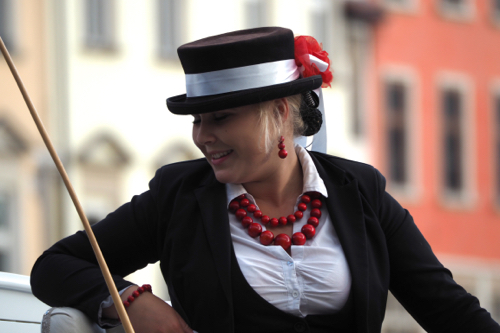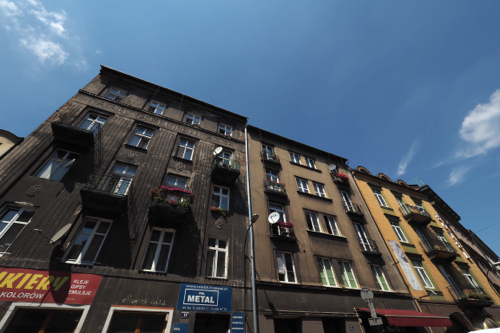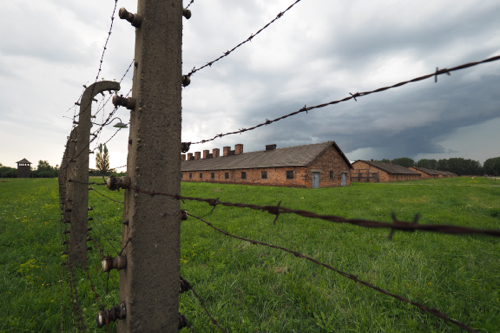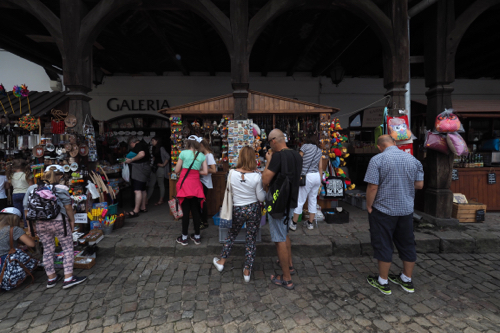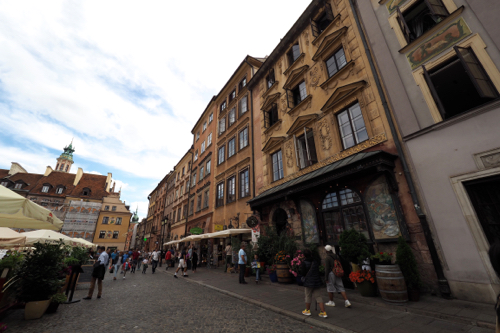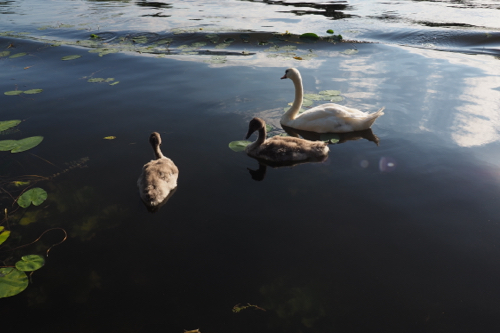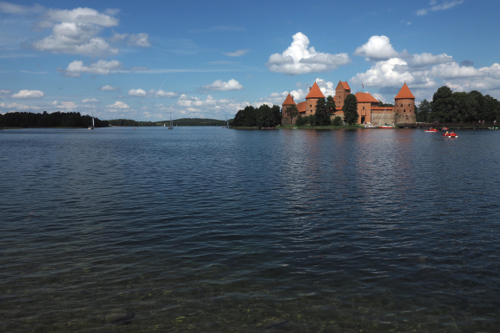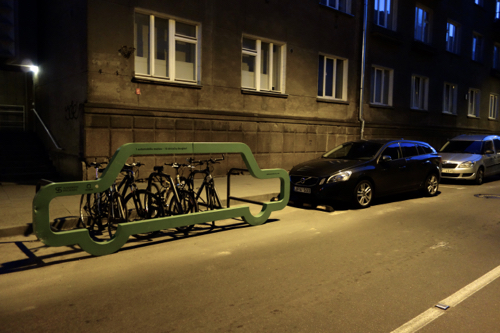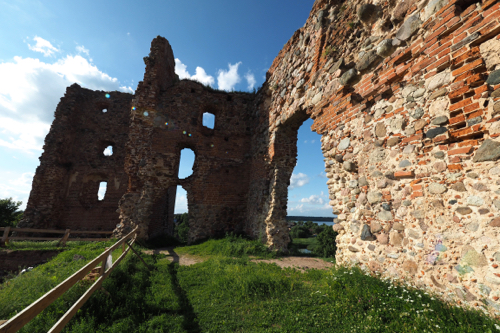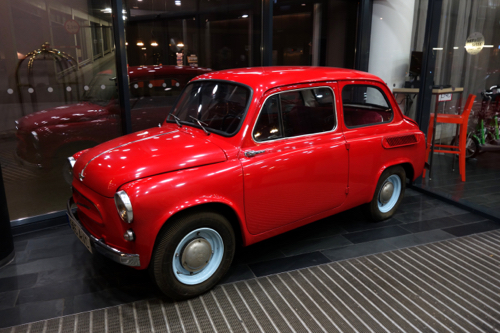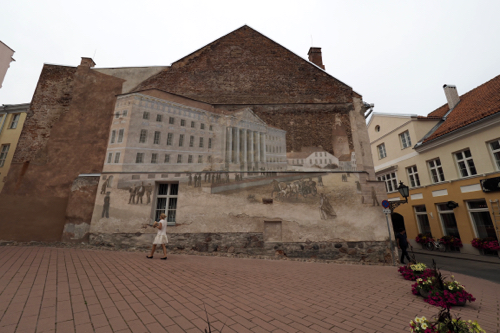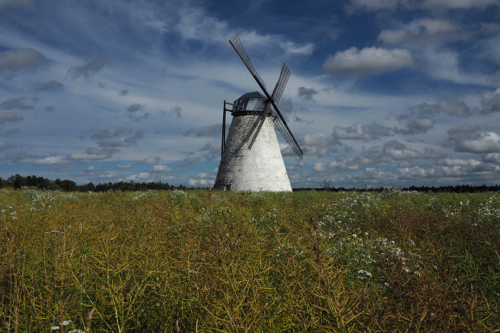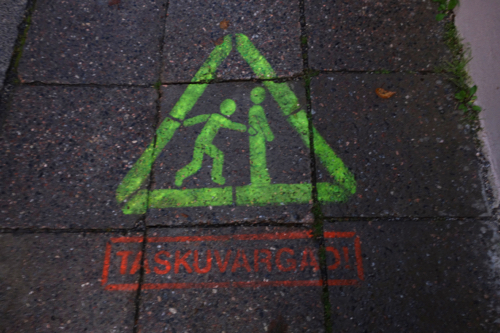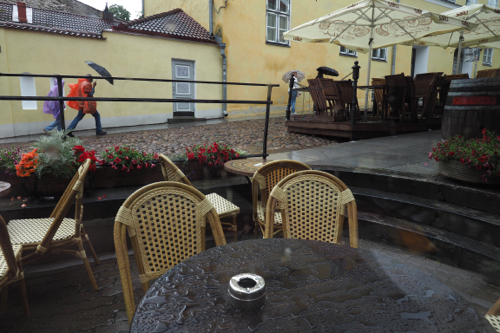July 21, 2017. Poprad-Spišská, Slovakia to Krakáu, Poland.
The task for today was simple – drive the 149 kilometres from Poprad-Spišská, Slovakia to Krakau in Poland. This was one of our shortest drives but it turned out to be one of the slowest.
If Slovakia was ‘slow-quick’, Poland was ‘slow-slower’.
We added nearly an hour and a half to the estimated time. The traffic density was twice what it had been in Slovakia and they were building a huge freeway along most of the route.
This new road was certainly needed.
As soon as we got to Krakáu, we found the tourists – in their thousands.
Unlike where we had been over the last days in Slovakia, Poland was a tourist destination and Krakau was a tourist city.
Multiple languages, including English were being spoken on the streets, in the hotels and in the restaurants. Touts, hawkers and buskers were trying to relieve you of your money and souvenirs stands were on every corner. There was also Segways and horse-drawn carriages, ready to show you around.
Prices were also back to their usual inflated value and this meant that there were ATMs everywhere, just in case we ran our of cash.
I think I like places with fewer tourists.
July 22, 2017. Krakáu, Poland.
We were in Krakáu to try and get an understanding of the horrors of the Holocaust and the Nazi occupation of Poland.
Krakáu has a rich heritage, having grown from a stone age settlement to become Poland’s second most important city. In 1364 Casimir III founded the University of Krakáu and today it still remains a centre of academic excellence.
The 15th and 16th centuries were known as the Golden Age for the city. This was the time of the Polish Renaissance when architecture and art flourished. The High Synagogue, built in either 1407 or 1492 (scholars differ), was then rebuilt in 1570 and is regarded as one of the best examples of a Fortress Synagogue in Europe. The Jewish population played an important role in the growth of the city but even as far back as 1495 they were being persecuted. King John I Albert expelled them from the city wall and they were relocated to Kazimierz.
In 1939 Nazi Germany invaded Poland and Krakáu became part of the General Government. This was a separate administrative region of the Third Reich.
The Nazis wanted Krakáu to become a Germanised city which involved removing all the Jews and Poles – one way or another. They confined the Jews to a ghetto, where many died from starvation or illness. Later those in the ghetto were either murdered or sent to concentration camps.
After working in the morning, we headed out to discover the city. Our first stop was in Kazimierz, the old Jewish quarter and then the High Synagogue.
Having seen Steven Spielberg’s 1993 movie, Schindler’s List, we were interested to visit the factory where Oskar Schindler (1908-1974) saved the lives of over a thousand Polish Jews. Based on the Thomas Keneally book, Schindler’s Arch, most of the movie was shot in Krakáu.
The factory was built in 1936, by a group of Jewish business men, for the Record Metal Goods Company. The business went broke at the start of the war and it was then rented by Oskar between 1939 and 1944.
The Schindler’s Enamel Factory is situated in the district of Zabłocie. In recent years the area has been redeveloped and is now a trendy new suburb, full of apartments, coffee shops and restaurants.
The exhibition, although in the Schindler factory, wasn’t about Oskar. It was all about the German occupation of Krakáu between 1939 and 1945.
The Krakáu Ghetto was established in 1941 in the Podgórze district. This area originally housed 3,000 people but ultimately there were 15,000 crammed into its walled space. From 1942 the Nazis began deporting the Polish Jews to surrounding concentration camps.
In March 1943 the Nazis undertook the final ‘liquidation’ of the Ghetto. Eight thousand, who were deemed able to work, were sent to the Plazów labour camp while 2,000 were killed in the streets of the Ghetto. The remaining survivors were sent to Auschwitz.
The Poles have had it tough and the exhibition was a stark demonstration of that.
They gained their independence from the Austro Hungarian Empire in 1918. Then in 1939 they lost if again, this time to the German’s. Only to lose it again in 1945, this time to the Russians.
July 23, 2017. Krakáu and Auschwitz – Birkenau, Poland.
We had booked an Auschwitz-Birkenau Full-Day Guided Tour from Krakáu.
This wasn’t our intended way to see the Nazi concentration and extermination camps but it was the only option available.
All the tours, for individuals, were booked out weeks in advance.
It appears that the tour companies buy up all the tickets, so you are forced to use them.
It took us just over an hour to drive to Auschwitz.
Auschwitz I was the original concentration camp, constructed in 1940 it was primarily to hold Polish political prisoners. Then Auschwitz II – Birkenau went on to become a major site of the Nazis’ Final Solution
Auschwitz II – Birkenau was the largest Nazi German Concentration and Death Camp.
Between 1942 and 1944 over 1.3 million people were sent to the camp.
1.1 million people died in Auschwitz, 90% were Jews.
Just as we were about to finish our tour of the death camps the rain came down.
It was a fitting end to a very sobering experience.
Later in the afternoon we went in search of something a bit more uplifting and walked around Krakáu Old Town. This area was listed as a UNESCO World Heritage site in 1978.
We visited the The Cloth Hall, a beautiful late 15th century Renaissance building in the main market square.
We also stopped at the Town Hall Tower (1316), St. Florian’s Gate (1307) and the Barbican Gate (1498).
July 24, 2017. Krakáu to Kazimierz Dolny, Poland.
I worked again in the morning and then we drove to Kazimierz Dolny for a one night stand.
On the road we stopped at Ilźa for a break. This meant finding an ice cream for Thea and a coffee for me. The ice cream wasn’t a problem, as there were at least four places selling them, even though the town was tiny.
Too tiny for a coffee as it turned out.
We drove into Kazimierz Dolny and had a walk around the quaint Renaissance town.
That night it rained again.
July 25, 2017. Kazimierz Dolny to Warsaw, Poland.
After I worked in the morning we then checked out of the hotel and walked into town.
Along the way, beside the Vistula River, there’s a sculpture hanging over a wharf. It’s of a tightrope walking young boy with a kite.
It’s by Jerzy Marian Kędzioraa, a Polish artist, born in 1947. He is famously known as the creator of the ‘Balancing Sculpture’ genre and has installations throughout Poland.
It was Market Day in Kazimierz Dolny.
Ice Cream Day as well, as everyone seemed to be licking one.
Apart from the Parish church and two restored town houses, Under St Nicolas and Under St Christopher, built in1615, there wasn’t much else.
We then continued on to Warsaw.
July 26, 2017. Warsaw, Poland.
I worked yet again in the morning and then we walked into the Old Town, which was a lot further away than we thought it would be. From what we read on booking.com, our apartment should have been much closer. Warsaw’s Old Town appears to have grown, a bit like Brighton, and seemed to be a much larger in area than we remembered.
The last time we were in Warsaw was in 2007 and we were staying in the Bristol Hotel which was right next to the Old Town.
Back then all the roads around the hotel were under repair, now everything was much more ordered.
It’s not very often that coffee leaves a bad taste in your mouth.
It did this day in Warsaw, when we found out that we were paying $13 for two double shot espressos. And to add insult to injury the service was non existent and they got grumpy when we didn’t leave a tip.
Warsaw’s Old Town has been almost entirely rebuilt following the Second Word War.
As a reprisal to the Polish resistance of the Nazi invasion, 85% of the city was destroyed. The German’s aim was to obliterate the centuries-old tradition of Polish statehood.
The rebuilding of the city included the reconstruction of the urban plan, which included the Old Market and the surrounding town houses, the city walls and the Royal Castle.
We spent the rest of the afternoon wandering around the city.
We were lucky enough to see the changing of the guard ceremony at the Tomb of the Unknown Soldier. This took about one minute, compared to the one at Arlington, in Washington DC, that took twenty.
The Palace of Culture and Science is a Soviet era building that dominated the city skyline and we were interested to get a closer look. Built between 1952 and 1955, in the Socialist Realism style, it has become a modern landmark in the Polish capital.
It is the tallest building in Poland and the eighth tallest in the European Union. It is 237 meters high, which includes the 43 meter spire.
It was originally known as the Joseph Stalin Palace. but after ‘Destalinisation’ its name was changed to the rather boring ‘Palace of Culture and Science’
Some less common names include ‘Stalin’s Syringe’ and ‘Stalin’s Dick’.
July 27, 2017. Warsaw to Augustów, Poland.
After breakfast in the apartment we walk around the corner and got a coffee.
12 Zloty (A$4) for both – a far cry from the 37 Zloty (A$13) the day before. And there was service with a smile.
We then headed to Augustów, which is about 240 kilometres north of Warsaw.
This is a seaside resort on the Augustów Lakes.
We had booked another apartment which was in one of three old Soviet apartment blocks.
It was small, very small, with three rooms and a bathroom. And it was painted in ‘Soviet Green’, like so much of that era.
Soviet Green is like a Spring green but dulled down.
After we had checked in we went for a walk into Augustów and then along the Netta River.
We only spent one night at the apartment in Augustów, which was a very Soviet experience, but well worth it.
July 28, 2017. Augustów, Poland to Vilnius, via Trakai Castle, Lithuania
I have become very efficient at reverse parking onto footpaths. In a lot of places there is more room there than than on the road.
On the way to Vilnius we stopped off at Trakai Island Castle, which is on Lake Galve.
And so did all the tour busses.
The stone castle was started by Kęstutis in the 14th century and completed by his son, Vytautas the Great, in 1408.
Over the centuries the castle fell into disrepair and was then partially restored, but it wasn’t until after the Second World War, in 1948, that it was renovated to its current 15th century style.
The castle museum, founded in 1948, holds about 300,000 artefacts.
There was an entire room dedicated to decorative pipes.
Trakai is a major tourist attraction and regarded as a true Lithuanian heritage castle.
July 29, 2017. Vilnius, Lithuania.
Our hotel was in a casino, but we were separate from it.
Except for breakfast.
This was in one of the casino’s restaurants and we had to be escorted through the casino, past the tables, to get there. Our escort was a big, burly casino security guy.
In the casino there were people on the tables and at the bar – it was 9:30am.
A family of three also turned up for breakfast and they were as confused as we were.
This was Saturday and we were told that breakfast wasn’t available on Sunday.
Why, we didn’t know, but in a way we were relieved, as we felt uncomfortable being minded by muscle that early in the morning.
We had a long walk around the city and visited Gediminas Castle Tower. The first brick tower was built in 1409 by Gediminas, Grand Duke of Lithuania. The tower is an important part of Lithuanian history and featured on the national currency, the Litas.
Within the tower was a temporary exhibition titled ‘The Baltic Way’.
On August 23rd 1989 more than 2 million Latvians, Lithuanians and Estonians made a living chain from Tompea Castle in Tallin, Estonia to Gediminas Tower in Vilnius, Lithuania. This was in protest of the USSR’s occupation of the Baltic States in 1939. This resulted from the Molotov – Ribbentrop Pact between the Soviets and the Nazis.
After the war the Soviets denied existence of the pact and claimed that the Baltic States joined the USSR voluntarily.
Vilnius is a city to see in the morning, because in the afternoon, everything is back-lit.
After dinner we discover the Vilnius bike racks. Each rack held ten push bikes and very graphically demonstrated that each rack could take just one car or ten bikes.
July 30, 2017. Vilnius, Lithuania to Ludza, Latvia.
It was about 300 kilometres from Vilnius to Ludza in Latvia.
Given our experiences of the last few days I thought we would be in for a very long trip.
This wasn’t the case.
Being a Sunday the roads were very quiet and there were very few trucks and not a lot of of roadworks.
That’s until we got into Latvia.
The roads were better than Lithuania but that was because they were repairing them.
It was still a pleasant trip that took about six hours, including stops for coffee and delays due to the roadworks.
Ludza is the oldest town in Latvia and first mentioned in history in 1173.
It has a stone built, Livonian Order, crusader castle constructed in 1399. The castle, as usual, is on top of a hill that overlooks the Lielā Ezerkrasta iela (lake)
It is located on the main Riga to Moscow road and only 30 km from the Russian border.
The town is relatively small so it didn’t take much time to walk around.
Diner was at the Hotel Ludza, as there weren’t many options in the town. The hotel was a Soviet era building and again there were the green walls that we had seen in our apartment in Augustów.
There was a constant babble in the rooms adjoining the restaurant. As it turned out there was a birthday party in progress.
I got chatting to a few of the guests when I went outside to take some snaps of the hotel. The group were very Russian in their look and their attitude and were intrigued as to why two Australians could possible end up in Ludza.
July 31, 2017. Ludza, Latvia to Tartu, Estonia.
It looked like being another longish drive into Estonia, up past the Russian border.
Surprisingly the roads were free of repair gangs and there was very little traffic.
There were virtually no trucks as well.
Which is understandable, as the SatNav took us on a very back-roads route. This did give us some great scenery. Forests, lakes and quaint little villages were our companions for most of the drive.
Estonia is regarded as one of the most digitally advanced countries in the world.
Fast free internet is everywhere.
Our hotel was right next to the Emajögi River and was within an easy walk of the old town square.
In the afternoon we wandered along the river and into town, then ended up at the botanical gardens. Established in 1803, they are small and built on a hilly site. This made for an interesting and varied landscape, and a good stroll.
August 1, 2017. Tartu, Estonia.
The Captur had done over 4,000 kilometres, so it was due for a wash.
The roadkill was encrusted onto the front of the poor little Renault. And after the unmade roads of the previous day, it was looking rather shabby.
The hotel directed to a local hand car wash.
It was €20 (almost A$30) for a wash only. That’s a lot more than I pay at Clearwater in Brighton.
Tartu was first mentioned 1030 and is the second largest city in Estonia, next to Tallinn.
Tartu Domed Cathedral has been partly restored and is now used as the University of Tartu History Museum.
The University buildings have been beautifully restored and there is even an old elevator that still works.
In these eastern block countries there is a constant reminder of their Soviet past. In the foyer of the Hotel Dorpat, was a shiny red, rear engined, Soviet ZAZ-965. Produced in the ZAZ factory in Soviet Ukraine between 1960-1969, they were described as ‘Superminis.’
August 2, 2017. Tartu to Vihula, Estonia.
After breakfast at the hotel we went over the road to the Taska Mall to get a coffee.
Estonia is a very different part of Eastern Europe. The technology, culture, fashion and language all seem to be more Nordic.
English is very widely spoken, not just in the tourist related establishments but all types of businesses.
I had a haircut and they spoke English and in the car wash, again, English.
We had been on the move since we left Berlin and decided to have a few days off in the country.
The Vihula Manor Country Club and Spa was in a large old Estonian estate set within the Lahemaa National Park.
It was spread over acres, with ponds, bridges, walkways and accommodation set within beautifully manicured gardens.
They even have an old Dutch stone windmill at the front gates.
Visual Vyoll, as it was then known, was first mentioned in history in 1501.
There is nothing left of that era as it was destroyed in the Great Nordic War of 1700 to 1721.
The structures that are there today date from the late 1800s.
During the Russian Revolution the Red Army Guards devastated the manor and then it was nationalised between the wars.
From 1941 to 1944 it was an Intelligence School for the German Abwehr. Then under Soviet rule it became part of the Ubja State Farm and from 1951 to 1980 it was a senior citizens asylum.
The park is set on a coastline that encompasses four peninsulas that jut out into the the Gulf of Finland.
Lahemaa is one of Europe’s most important forest conservation areas, where many large mammals live. Apparently the area is home to moose, wild boars, brown bears, lynxes and foxes.
We hope to see them, not meet them.
Within Vihula Manor there is a car museum, with a small collection from the Soviet era.
Volga (gAZ-21) 1959, Chaika (1970), Pobeda (1953) and a French Berliet (1927) and German Opel (1936).
August 3, 2017. Vihula, Estonia.
There are two nature trails around Vihula Manor, one is 3 kilometres and the other is 1.5.
The longer of the two takes you through part of the forest, along the Vihula River and across the hay fields that are within the property.
The property area of Vihula Manor is large, with the buildings occupying over 8,000 square meters, all set within 50 hectares of parkland.
In the afternoon we drove to the small fishing village of Altja on Vérgi Bay. We then drove further west to the much larger town of Vösu.
There was a sandy beach and a very strong wind.
Windsurfers and sailboarders were taking advantage of the wind, while the sun bakers were hiding behind the long grass on the foreshore.
There were a couple of brave bathers actually in the Straits of Finland.
In the evening we decided to go to the ‘swish’ restaurant.
We were advised to book in advance.
When we arrived there was only one other table occupied, and by the end of the evening there was only one more.
At breakfast the place seemed full. So where are they eating?
My guess is, in their rooms.
We have seen this a lot throughout Eastern Europe. The cities and sites seem busy, but the tourists retreat at the end of the day.
We often see travellers, loaded down with plastic bags full of groceries, heading into their hotels.
August 4, 2017. Vihula, Estonia.
We woke to the sound of rain pouring down the drainpipe, just outside our window.
Luckily we did our exploring the previous day, when the weather was fine.
Estonia has a vibrant craft beer industry. I don’t know how much is draught but there is certainly a lot of bottled beer on offer.
At the Vihula Manor tavern there were 13 bottled craft beers on the bar blackboard. They were from three different breweries, Vihula, the local brew, Ollenaut and Purtse.
They covered a wide variety of styles, including IPA, American Pale Ale, Pilsner, Brown Ale, Stouts and Porters.
Over the last few weeks we have seen many storks and their nests. They are usually high up on a man made, purpose built, stork nest platform.
We wondered why.
Thea did a bit of digging and came up with a possible answer.
Superstition.
Apparently German peasant farmers believed that it was good luck to have a stork nest in your property. So they build places for them to do just that.
The were originally cart wheels placed on top of chimneys, now they are metal frames on top of a specially erected pole.
With the migration of Germans to all parts of Eastern Europe, this tradition has been maintained and stork nests are everywhere. They don’t just set up home on the man made locations but also on power poles and very occasionally in the tops of trees.
August 5, 2017. Vihula to Tallinn, Estonia.
We had our final breakfast at Vihula Manor. It wasn’t as crowded as the previous two days so the staff had a chance to be even more polite than usual.
Then as we were leaving the hotel it dawned on me. The staff had obviously been trained in the You’re Welcome School of Hospitality.
Wherever we went in the hotel we were greeted with “Have a nice day” and the phrase, “You’re welcome” was so overused that some of the staff actually said it before they served you.
The weather has been very erratic over the last few weeks and suddenly it had taken a turn for the worse.
On the drive from Vihula to Tallinn we were constantly buffeted by brief storms. We would have a few minutes of torrential rain, followed by bright blue sky. Then it would happen all over again a few kilometres down the road.
The same pattern continued when we arrived in Tallinn.
Our apartment was close to the old city and crowded with tour groups.
They blanketed the road and it took me an age to wend my way through the narrow streets and alleys.
After finding our apartment, we parked the car and went for a walk.
Then the rain started again.
While we were dodging the showers I noticed a graphic stencilled on the pavement. It was warning people about pick-pockets.
Well, Tallinn is a large city and there are lots of tourists.
August 6, 2017. Tallinn, Estonia.
In the morning the rain was still pelting down and we were forced to stay inside.
It persisted, so we made the executive decision to have a long lunch.
After all it was Sunday.
By mid afternoon the skies were a little clearer so we set out to explore the city.
Tallinn is the oldest capital in Northern Europe with a history dating back to 1154.
The Old Town is one of Europe’s best preserved, walled, Medieval cities and a UNESCO World Heritage Site.
It’s also only 80 kilometres to Helsinki in Finland, as the ferry flies.
Because of its location Tallinn became an important trading centre from the 14th to the 16th centuries. As a result there are a number of wealthy merchant houses in the Old City.
Tallinn wears its history proudly with well restored buildings and lots of tourist signs pointing to its colourful past. A large number of the old houses have been turned into museums. In fact there seems to be a museum for just about every topic.
Just next door to our apartment was the Tallinn Museum of Estonian Drinking Culture. I think it was really a front for a bottle shop and bar.
Tallinn a very popular destination with Russian tourists, as it’s a lot cheaper than Scandinavia and Western Europe.
We had got a good feel for Tallinn in the time we were there but weren’t too concerned that we hadn’t done it justice, as we were due to return after visiting Finland.
